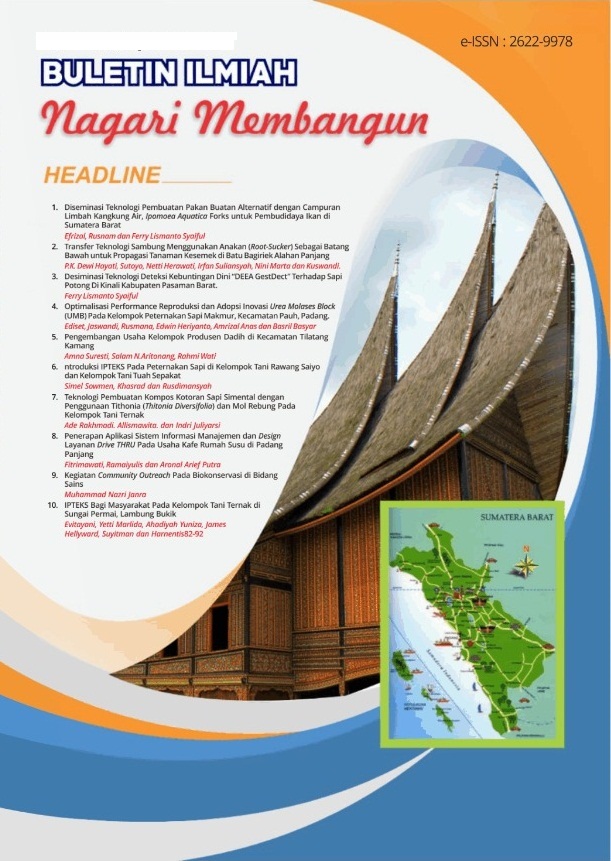PENERAPAN PRAKTIK HAND HYGIENE YANG BENAR DI SDN 5 TOBOH PALABAH KOTA PARIAMAN
Abstract
Hand hygiene is one of the important elements in achieving one of SDG’s targets in 2030. Hand hygiene includes washing hands with soap and using hand sanitizers. Hand hygiene provides great health benefits at a relatively small cost. Curly Ch Personal hygiene is considered the best tool to prevent infectious diseases that affect their growth and development. Health education about hand hygiene is the only cost-effective way to implement the correct hand hygiene. Elementry School 5Toboh Palabah Kota Pariaman is a curly educational institution located on the side of the road that is often traversed by vehicles and the community, so it is very important to provide health education about hand hygiene. In addition, based on interviews with teachers, it was stated that there was no health education on how to wash hands and apply hand hygiene from health workers. 21 students in grades 5 and 6 of Elementry School 5 Toboh Palabah, Pariaman City, attended the health education activity. The activity is divided into two sessions. The first session is material giving and the second session is the practice of washing hands with soap and using hand sanitizers. This activity went smoothly, and a positive response both in the first and second sessions. All students can practice hand washing steps and understand the application of hand hygiene correctly. With this health education, we hope that school residents, especially students of Elementry School 5 Toboh Palabah, Pariaman City can implement and optimize the use of school facilities so that the application of hand hygiene can be carried out properly and correctly.
Downloads
References
ALBashtawy, M. (2017). Assessment of hand-washing habits among school students aged 6–18 years in Jordan. British Journal of School Nursing, 12(1), 30–36. https://doi.org/10.12968/bjsn.2017.12.1.30
Curtis, V., Schmidt, W., Luby, S., Florez, R., Touré, O., & Biran, A. (2011). Hygiene: New hopes, new horizons. The Lancet Infectious Diseases, 11(4), 312–321. https://doi.org/10.1016/S1473-3099(10)70224-3
Jamison, D. T. (2018). Disease Control Priorities, 3rd edition: improving health and reducing poverty. The Lancet (Vol. 391). https://doi.org/10.1016/S0140-6736(15)60097-6
Kementerian Kesehatan RI. (2020). Panduan Cuci Tangan Pakai Sabun. Kementerian Kesehatan RI. Jakarta
Mbakaya, B. C., Lee, P. H., & Lee, R. L. T. (2017). Hand hygiene intervention strategies to reduce diarrhoea and respiratory infections among schoolchildren in developing countries: A systematic review. International Journal of Environmental Research and Public Health, 14(4), 1–14. https://doi.org/10.3390/ijerph14040371
Sarkar, M. (2013). Personal hygiene among primary school children living in a slum of Kolkata, India. Journal of Preventive Medicine and Hygiene, 54(3), 153–158.
Steiner-Asiedu, M., Van-Ess, S. E., Papoe, M., Setorglo, J., Asiedu, D. K., & Anderson, A. K. (2011). Hand Washing Practices among School Children in Ghana. Current Research Journal of Social Sciences, 3(4), 293–300.
United Nations Children's Fund (UNICEF) dan World Health Organisation (WHO). (2021). State of the World’s Hand Hygiene. UNICEF dan WHO. New York-USA.

This work is licensed under a Creative Commons Attribution-ShareAlike 4.0 International License.




















